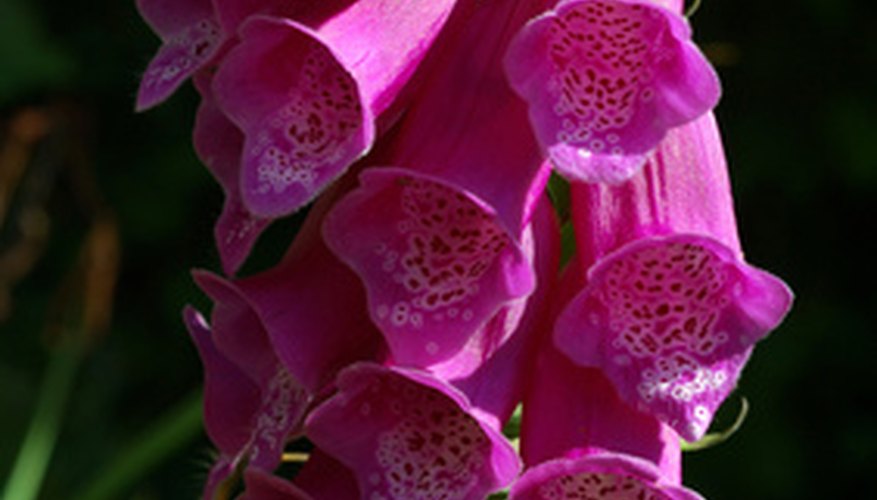Witches' glove, dead man's bell and bloody fingers are just a few common names for the toxic foxglove plant. Knitbone, boneset and bruisewort are some of the common names of the friendlier plant, comfrey. Confusing them has caused accidental poisoning of humans, pets and livestock through the ages.
Foxglove
The Anglo-Saxons called it "foxes glofa" meaning the glove of the fox. The blossoms of the plant look something like the fingers of a glove. Northern European folklore held that the fairies gave the fox gloves so it could sneak up on its prey. Herbalists used foxglove as an expectorant and to clean wounds and reduce swelling. Today, the dried leaves of commercially grown common foxglove are the principal source of the important heart drug, digitalis.
- The Anglo-Saxons called it "foxes glofa" meaning the glove of the fox.
- Northern European folklore held that the fairies gave the fox gloves so it could sneak up on its prey.
Foxglove Dangers
Foxglove is most often confused with comfrey in its first year of growth, when it most resembles that plant. Foxglove is always toxic but most dangerous when the seeds are nearly ripe. The upper leaves are more toxic than the lower ones. Symptoms of poisoning are irregular heartbeat and convulsion, and sometimes dizziness and vomiting. The affected person may become delirious and hallucinate. Consuming or even sucking the flowers, seeds, stems or leaves of the foxglove can have unpleasant and even deadly effects.
- Foxglove is most often confused with comfrey in its first year of growth, when it most resembles that plant.
- Foxglove is always toxic but most dangerous when the seeds are nearly ripe.
Comfrey
Comfrey has been used for thousands of years to speed healing of broken bones, bruises and burns. Herbalists use it to soothe ulcers, hernias, bronchitis and pleurisy. It is an ingredient in salves for skin conditions. Comfrey can be used to make tea and also planted as a forage crop. Cornell University's Department of Animal Science notes there is disagreement about possible harmful properties of comfrey, with critics suggesting it may damage the liver if consumed.
- Comfrey has been used for thousands of years to speed healing of broken bones, bruises and burns.
Differences
Comfrey and foxglove look similar until they blossom. Foxglove flowers are larger than those of the comfrey. Both are bell shaped, but the comfrey flowers hang on many small clusters and the foxglove's flowers form one large cluster along a central cone-like spire. Both plants grow to around 4 feet tall. The leaves also are similar -- large and hairy. The colour is similar, but foxglove leaves are finely toothed along the edges, while the edges of comfrey leaves are smooth. Foxglove leaves spring from the root as a clump, while comfrey leaves branch from the stem.
- Comfrey and foxglove look similar until they blossom.
- Foxglove flowers are larger than those of the comfrey.
